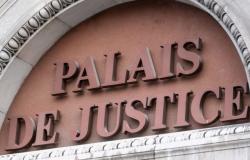FANO When the qualification intervention for Piazza Andrea Costa was planned, an archaeological investigation was included, given that it was already known that…
Already a subscriber? Log in here!
- Everyone the articles of the site, also from the app
- Insights and newsletters exclusive
- THE podcasts of our signatures
– or –
Subscribe to the subscription by paying with Google
Subscribe
SPECIAL OFFER
SPECIAL OFFER
MONTHLY
€4.99
€1 PER MONTH
For 3 months
ACTIVATE NOW
Then only €49.99 instead of €79.99/year
Subscribe with Google
FANO When the qualification intervention for Piazza Andrea Costa was planned, an archaeological investigation was included, given that it was already known that the area preserved finds of Roman origin, but it was probably not imagined that they were as important as those recently rediscovered .
The singularity
The latest discoveries, however, never cease to amaze, heightening curiosity about what is really hidden underground. «Once the investigations have been completed in the area near Via Arco d’ Augusto – highlighted the official of the Archaeological Superintendence of the Marche Ilaria Venanzoni speaking of the latest discoveries – new wall finds have emerged in the nearby part where the installation of the underground services is to be completed. . The singularity of the latter lies in their height, approximately one meter and twenty centimeters, a rare thing, given that generally archaeological investigations carried out in the Marche area uncover elements in the state of foundations or at most height of a few centimeters. Another interesting fact is that the bricks with which the wall was built are of the same nature as those found in via Vitruvio and in the archaeological area below the convent of Sant’Agostino. It is therefore an important wall located near the forum, where public buildings once stood. The very dimensions of the classroom that came to light could suggest it was a public building. Also significant is the discovery of a carnelian, a stone engraved with the figure of a faun, a mythological being, half man and half goat with a curved stick (the pedum) in his left hand and a bunch of grapes in his right.” What will be done now? Will the closure be completed? A further meeting is planned with the new administration.
History
The first investigations in the modern era date back to 1910 when the convent of San Daniele was demolished, some of the walls of which are still incorporated into the building that houses the Mc Kenzie pizzeria. An account of what was found then was reported in the important volume on Roman Fano published by the Municipality of Fano in 1991. The excavations carried out to arrange the new structures uncovered, at a short depth from the walking level, various remains of ancient environments characterized by walls with sandstone and brick blocks that delimited mosaic floors. These are essentially two structures identified near Palazzo Amiani and Palazzo Boccacci, structures that have re-emerged during these new works with further innovations compared to the past. In fact, not only have artifacts dating back to Roman times been found in the area, but also evidence from the early Middle Ages has come to light, when the buildings built in the imperial era fell into disuse and a small cemetery was built among their ruins . Once the time available to the archaeologists to carry out the excavations and then hand it over to the company that would create the new flooring was over, everything was being closed up when the area yielded new evidence: other sections of mosaic flooring and carnelian , which was to be set in a ring.
© ALL RIGHTS RESERVED
Read the full article at
Adriatic Courier






